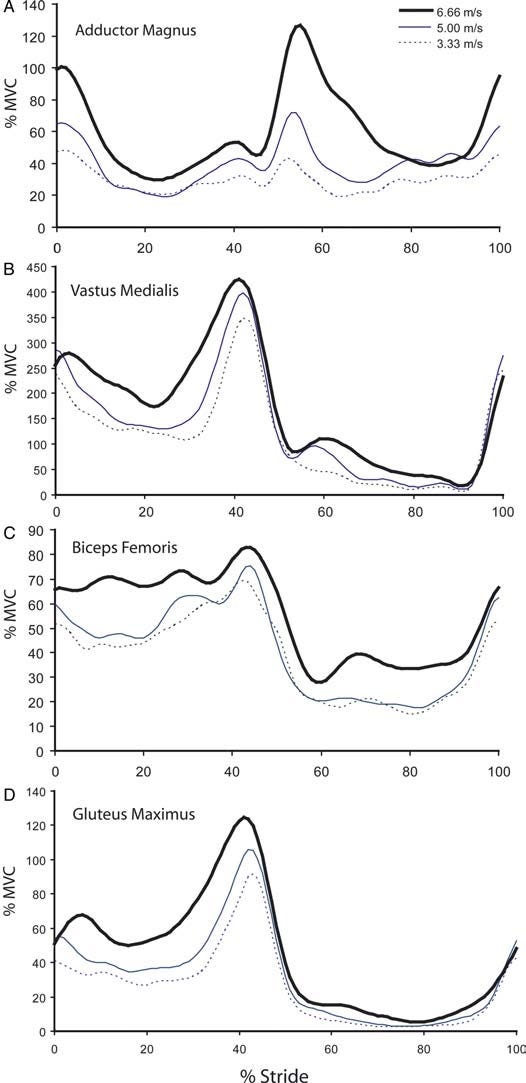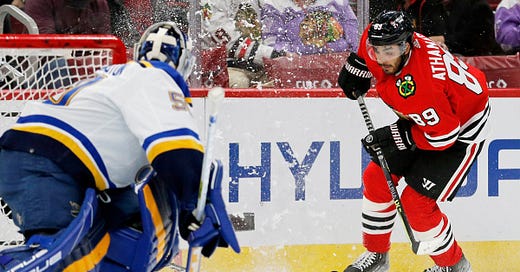With the Stanley Cup playoffs now over, it signals the official beginning of the NHL off-season.
As is customary in the beginning of all off-season programs, regardless of sport, is to initiate a program that involves moving the athlete from the specifics of their sport and to building more general capacities. At Absolute, this consists of pushing the athlete outside their boundaries with respect to Articular Workspaces, and using training inputs to create better quality and better organized tissue in areas that have been repeatedly used during the course of the season (including inputs for muscle tissue and connective tissue).
With athletes from the sport of hockey, within this initial training phase there is a large focus on the articular workspaces of the lower limbs (hip, knee ankle and foot) and spine as well as beginning to establish good quality tissue in the adductor region, posterior leg and posterior hip.
The Adductors During Skating
The adductor region is very specific to the sport of hockey and specifically the skill of skating as it requires a huge demand bilaterally from the hip adductors. All hockey athletes rest on a blade that is on 3/16 of an inch (roughly 5mm) thick, so the demand to balance while at the same time using that blade to carve into the ice to stride, turn tightly and quickly on the edge and to crossover to create speed places a very high demand on the hip joint as well as the inner thigh.
During forward skating it has been shown that the adductor muscles and specifically the adductor Magnus display a larger overall magnitude of activation and time to activation than other muscles surrounding the hip (see graph below). The adductors and again specifically the adductor Magnus display two excitation peaks during the skating stride - the first at blade contact with the ice and the second at stride recovery. Within the stride these two time periods refer to the initiation of the stride and the end of the stride (which occurs in the frontal plane) and the beginning of the leg being brought back to the starting position. In addition, when the velocity of skating increases the activation magnitude of the adductors increases significantly. What is most important to glean from this data is that the adductors, specifically the Magnus, are loaded at higher amplitudes and for longer durations over the available length of these tissues than any of the other muscles surrounding the hip and thigh.

Adductor Injuries
Based on the above data of the muscular mechanics of the hockey skating stride it should be no surprise that groin injuries are endemic within the sport of hockey and account for the most time lost due to injury when categorized into soft tissue specific injuries. It is difficult to truly establish the actual rate of adductor specific injuries as in the literature they are often grouped with soft tissue injuries of the lower abdominal region, pubic area, and hip and all have become encompassed in the “hockey groin syndrome”
The last study to investigate incidence of groin injury in the NHL provided data that showed that over a six year span the incidence of groin injuries significantly increased to 19.87 injuries/100 players and that the time loss due to injury was on average 6-7 games. Although this data is older, it does shed some light on the groin injury strain rates in athletes playing in the highest league in the world.
In a recent study conducted on players in the Swedish professional leagues found that 53% of all players had experienced a hip/groin injury during the previous season. Of those 48% reported that the injury had limited their ability to perform at an expected level and 29% missed playing time (1 -5 weeks) as a result.
In a study conducted specifically on goaltenders the data provided show that athletes in this position actually occur hip and groin specific injuries at higher rates than players in other positions. The demand on the hip and groin in the goaltending position, being up and down in the butterfly as well as pushing from post to post while being internally rotated and abducted requires large wells of capacity of both the articular work spaces, the strain behaviour of tissue as well as the force generating capacity of those tissues.
The data contained in the article show that over the course of a professional season in the Swedish Hockey League, 69% of elite goaltenders experienced at least 1 episode of hip and groin problems and 36% experienced at least 1 episode of substantial problems affecting their performance, training volume, or ability to play ice hockey. This is an alarmingly high rate of tissue specific limitation!
In our experience at Absolute, working with hockey athletes, hip and groin specific dysfunctions are exclusively brought about by overuse, especially at the professional level where a day off is hard to come by. In addition, it has been our experience that it is more rare for a hockey athlete to miss any significant time for an adductor tissue injury, however it is very apparent when discussing with the athlete the performance burden that these injuries have on the technical skill qualities of the athlete as well as the ability to adequately prepare for performance and train appropriately to maintain high levels of performance. This leads to the athlete being frustrated and losing confidence.
Adductor Tissue Training
Back in the early 2000’s the sports medicine evidence pointed toward an increase of hamstring injuries, which led to numerous investigations within sport as well as biomechanics to attempt to provide some actionable data on how to combat this increase. Within this, the popularity of the Nordic exercise was born. Subsequent research conducted helped to confirm the Nordic as a necessary input to include in any strength program where the intent was to “strengthen” the hamstrings to help mitigate injury.
It seems like the adductors are following the way of the hamstrings by having a designated exercise called the Copenhagen. A recent systematic review was published outlining the benefits as well as the current limitations of the research concerning this input.
A large reason as to why the Nordic for the hamstrings and the Copenhagen for the adductors have been wholly implemented in training programs is due to the eccentric nature of the exercises and the inherent benefit of lengthening tissue while under load. It is our belief at Absolute then that the demonstrated benefit of these exercises is the change in behaviour of the connective tissue in the anatomical area more so than an actual change in strength of the muscles per se. In fact, in all of the investigations included in the systematic review all showed a significant increase in the maximal eccentric strength of the adductors, which requires an inherent stiffness of the tissue to effectively absorb the required force.
Recently we had a Founders Meeting on the topic of Reactive Strength, a component of Point B. As discussed in the meeting reactive strength is an emergent quality of connective tissue that is largely dependent on the behavioural stiffness of this tissue. Ideally, this behaviour of the inter and intra-muscular web of connective tissue allows for the quick transition between the eccentric and concentric phases of movement that defines an athletes reactive strength ability.
This emergent behaviour defines for us as strength practitioners the prerequisite capacity that the web of connective tissue should possess to allow for reactive strength to occur - it must be able to lengthen appropriately under load and velocity. In so doing it must be able to use the potential energy that this comes with and convert it to kinetic energy, which is the physiological expression of reactive strength. In our opinion at Absolute this is where exercises like the Nordic and the Copenhagen fall short in their strict application as they are done firstly, without consideration of the length capacity of the tissue being trained and secondly without the progression of load or velocity, although they do form a nice base upon which to build these types of progressions.
Adductor Linear Loading Progression
Considering that the Copenhagen is defined as an eccentric which does require a necessary development of prerequisite tissue capacity it allows for the structuring of what can be called the “Linear Loading Progression” for tissue specific capacity.
As you can see from the visual above there is a necessary progression that must be considered when working to create length based stiffness of tissue starting from isometric based loading to overspeed eccentrics.
From this we can take the Copenhagen exercise as described and make it fit into acquiring a tissue specific behaviour that will have a significant impact on the health and longevity of our hockey athletes.






